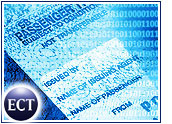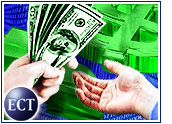
North American e-commerce revenue is expected to grow 46 percent by the end of 2001 compared to a year earlier, tojust over US$65 billion, according to aretailer survey released Wednesday by the Boston Consulting Group (BCG) and Shop.org.
In addition, the report predicted that online retailing will show significant growth as a percentage of overall retailing, increasing its piece of the pie from 1.7 percent last year to 2.5 percent by the end of 2001.
In certain categories — such as computerhardware and software, and books and travel — online revenue already exceeds 10 percent of total retail revenue.
“Online retailers as a whole have started to conquer the basics, but we’ve got a long way to go and a lot more potential to realize as we move forward,” said Elaine Rubin, chairman of Shop.org, the online arm of the National Retail Federation.
“[E-tailers] have become a lot smarter, more experienced and more competitive in how we’re marketing, both in customer acquisition andretention,” Rubin said.
CRM Is Key
According to the report, a key to future e-commerce success will laywith a company’s ability to leverage its customer data through customer relationship management (CRM) systems.
In moving towards profitability, e-tailers will be able totrim some costs by automating their customer service functions, the report said. However, BCG e-commerce director JamesVogtle said that these changes will not necessarilycome at the expense of customer satisfaction.
“Customer service makes up only 3 percent of average online retailerrevenues,” Vogtle said. “E-tailers will hit other bigger areas first, such as marketing and fulfillment, before they hit customer service.”
Catalogs Are King
Catalogers are the only consistently profitable e-tailers, the report said.In 2000, 72 percent of online catalogers were operating with a profit.
“[Catalogers] have been able to assume a more aggressive position,” said BCG vice president Peter Stanger. “They havethe lowest customer acquisition costs among online retailers and tend tofocus their marketing on targeted media, such as direct mail with a directpayoff.”
Pure Plays Up, But Behind
Internet pure plays still suffer from incurred losses averaging 94 percent of their revenue. Only 27 percent of Web-based retailers are profitable atan operating level, the study found.
Pure plays also have the highest customer acquisitioncosts — an average of $55 per customer, or almost four times that of catalog companies.
“The majority of those that are profitable today are niche players withrevenues of less than a million,” Stanger said. “To be viable, mostWeb-based retailers will need to focus on a market niche, or enter intopartnerships with complementary offline players.”
Bricks without Structure
Brick-and-click operations, in contrast, incur average operating losses of 36 percent of revenue.
“Store-based retailers still struggle to provide consistent shoppingexperiences across all channels — they have the highest shopping cartabandonment rate and the lowest buyer conversion rates,” said Stanger. “They are lackingthe fulfillment and customer service infrastructure catalogers have had.”
In order to succeed online, the report said, brick-based retailers must achieve “a greaterunderstanding of customer lifetime value, improvement of the online orderingprocess, and more sophisticated fulfillment systems.”
Travel Reigns
Travel, the largest online category at $13.8 billion in 2000, will continueto grow another 50 percent over the rest of the year, the report predicted.
Asthe online market matures throughout 2001, however, growth in other leadingcategories, such as books and computer hardware and software, will level offat 25 percent and 15 percent respectively, according to the report.
“High penetration categories share three important characteristics,” the report said. “First, they are information intensive. Second, the products purchased do notrequire physical inspection prior to purchase. Third, these categoriesinvolve discretionary purchases, not necessities.”![]()
















































While the projected increase in online shopping shows promise ….Online retailers really need a boost in consumer confidence. We need to market directly to consumers the advantages of shopping online, instead of constantly raising fears of credit card fraud. The are so many businesses online now who have invested a great deal of resources in getting there, and providing a good shopping experience. The problem is – so much attention is focused on negative stories rather than success stories. Consumers and retailers both benefit from choice and comparison shopping online. I AM now personally shopping online for pretty much all of my gift purchasing, and the convenience factor is SO GREAT that it needs to be emphasized and promoted. E-commerce service providers, credit card companies, shipping services and more groups need to help retailers promote online shopping also – they all stand to benefit BIG TIME!